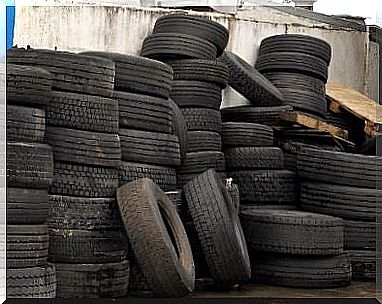Tire Care Tips

Correct maintenance of all vehicle components guarantees not only the safety of the occupants, but also maximum comfort when traveling. These tire care tips will extend the life of your tires and allow for greater enjoyment on any ride.
Pressure, a vital issue for tire care
Indispensable is to check the tire pressure once a month. If it is more than 20% of what is required, the wear will occur in the central part. When it is too low, wear will occur on the outside.
In both cases, the consequences will be a reduction in the contact surface with the asphalt and a decrease in grip.
With or without load
The weight of the vehicle will influence the pressure of the tires. Increasing the load of the car and not checking that pressure would be equivalent to traveling with almost empty tires. This should be a routine check before each trip, which will also reduce fuel consumption.
Drawing, an indicator
The patterns on the tires have a reason for being . Depth determines grip and traction. Also the ability of the rubber to remove the water that runs through those grooves.

In winter, this check will help prevent the rubber from only coming into contact with the water and not the ground and this increases the risk of losing control .
Tread review is one of the 10 tire care tips. Some have gauges that allow you to check depth or wear. It is a kind of witness in the tread grooves.
On other models, the initials TWI ( Tread Wear Indicator ) is on the edges of the tire. When it comes into contact with the asphalt, the wear and tear becomes evident and the need to change them, for safety. In some countries it is illegal to drive tires under these conditions .
Other ways to measure depth
A depth gauge or a euro. Both are mechanisms for determining the depth of tire grooves. Ideally, this should be greater than 1.6 millimeters.
The one euro coin is placed in the drawing; If you can see the gold edge, it is time to change it.
The depth gauge must be inserted in the edge channels and in the center channel. It will allow you to know if the wear is uniform.
A subject of specialists
In any tire there can be internal or external leaks. Unnoticeable perforations, air escaping through components or a drop in temperature are possible causes.
Other general aspects related to automobile mechanics, such as valves and their caps, should also be checked and changed with each new rubber. If they are cracked they can bend from speed and lose air. The review must be done by a specialist
Beware of speed!
In addition to being illegal, high speeds increase the temperature of the rubber and therefore its wear. This increases the danger of traffic accidents.
Caution is required when cornering. Riding them forcibly and at high speeds forces an aggressive grip on the road and can cause serious damage that goes directly against caring for the tires.
It is important to avoid sudden acceleration and braking. They increase tread wear and rubber degradation due to increased heat .
Bumps, rubs, holes
They are all dangerous. Gaps must be avoided at all costs and cause deformations or bulges and breaks in the tires.
When parking, be careful not to rub or hit the curb. Although often imperceptible, the damage can be irreparable; l will speeders have to pass slowly.
Correct alignment
When the tire loses alignment, the wheels are improperly supported and wear will be uneven and premature. In the rear wheels there are also misalignments that must be corrected.
In good shelter
When not in use, the tires must be secure. Never stacked or with objects on top. Storage should be in ventilated and dry areas, away from sun and rain, chemical or flammable products. Objects that can damage the rubber should also be avoided

The service life of a tire does not exceed 10 years. Its duration will depend on time, use or storage. If it is more than five years old, a thorough review should be done at least once a year. When the wheel reaches the decade, although they appear to be in good condition, it must be replaced.









